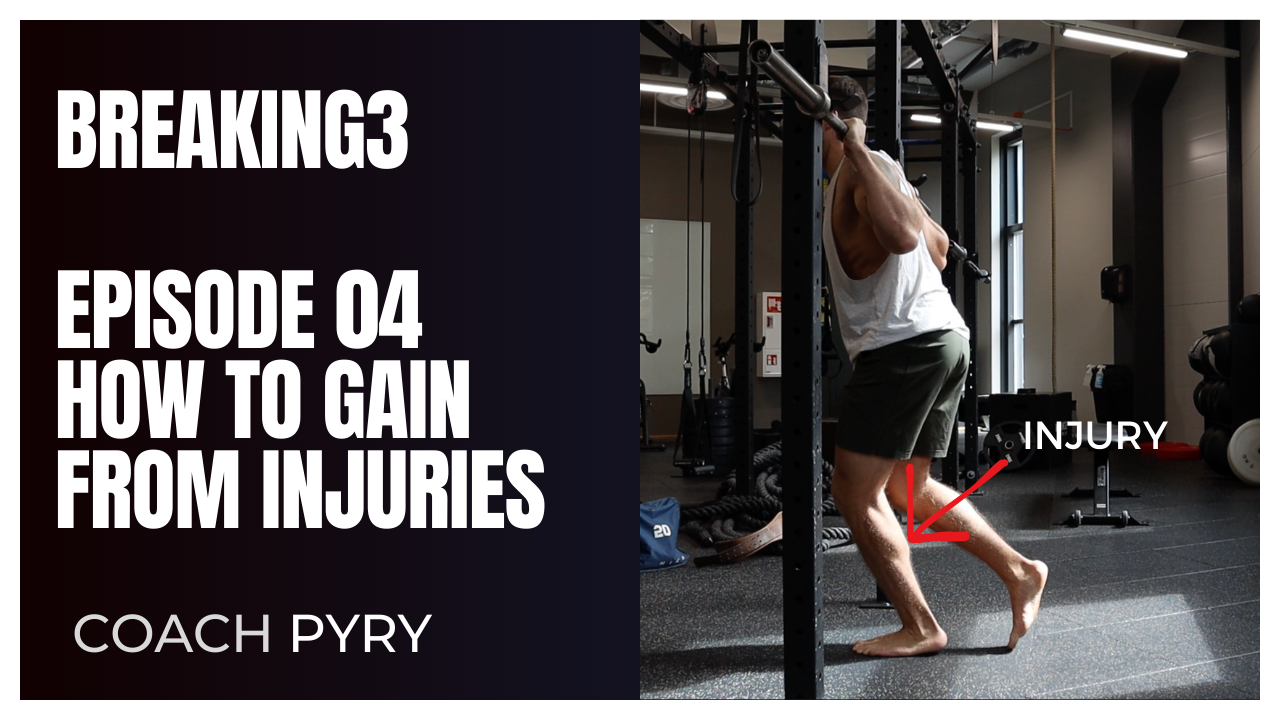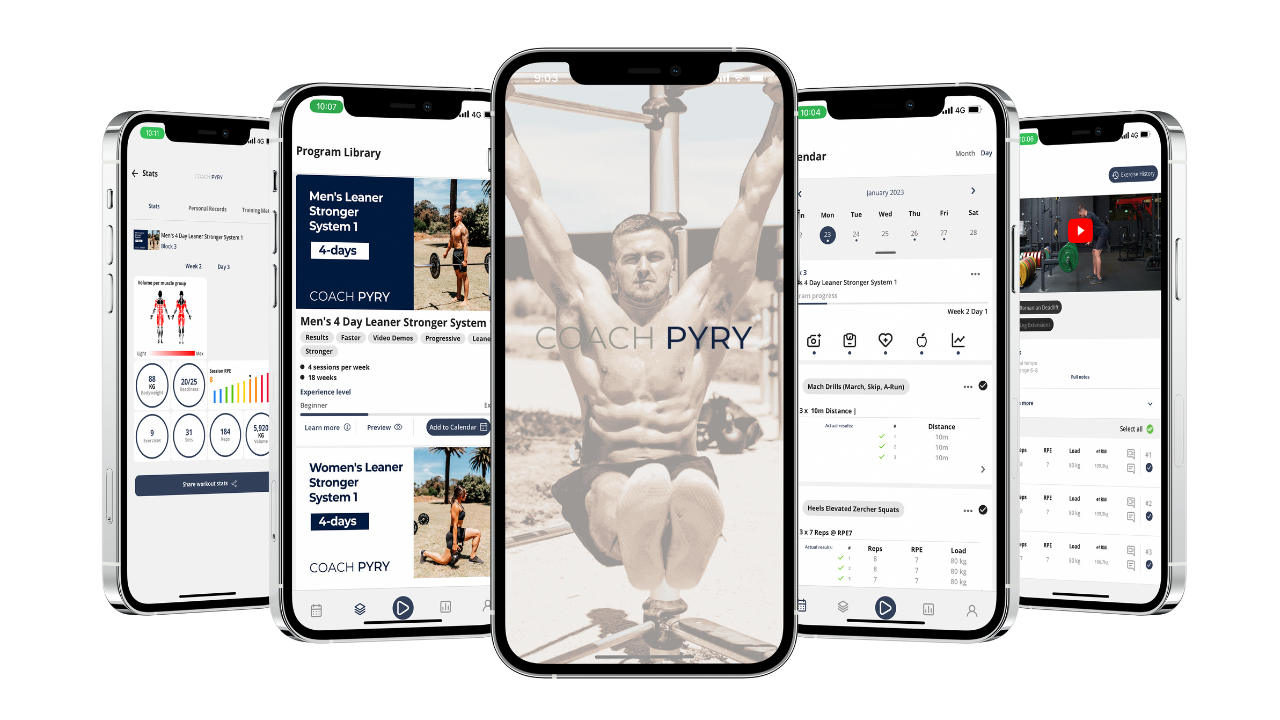How To Gain From Injuries - Injuries Are Blessings In Disguise
Jul 11, 2023
Injuries are blessings in disguise
In this post, you'll learn how to flip the script and turn niggles that caused you anxiety into the best things that have ever happened to your athletic performance.
A niggle highlights the weak links in your chain and pinpoints areas to focus on to accelerate you to even better athletic performance in the future.
Severe injuries are terrible things that can potentially end careers, and I don't wish that upon anyone.
However, slight overuse niggles that many of us encounter in our pursuits to develop our fitness and exceed our goals are potential goldmines that most people are NOT benefiting from.
I want to be clear: I'm not talking about soreness you encounter after training hard.
In fact, you should expect not to feel that great all the time if you are training hard and pushing yourself physically and mentally like I am in my pursuit to run a sub-3-hour marathon.
I'm talking about the pain that arises from something that has the potential to develop into something more sinister.
The longer you've been pushing your limits physically, the more attuned you are to the signals your body sends you.
You must stay present and pay close attention.
Can the niggle be handled by taking an easier training session, an extra day off, or a whole deload week, or should you seek a professional opinion?
How to deal with a niggle?
1. Start by doing an easier session, and see how your body responds.
Is the niggle still there?
2. You may need an extra day off.
Still there?
3. Time for a proper deload week.
Reduce training volume to about 50% of normal and intensity to 70%.
Feeling more energised, but the niggle is still there?
4. Time to consult a professional.
When it comes to benefiting from an injury to the fullest and setting yourself up to exceed your past performances, there are three things to remember while you rehab your injury.
1. Pain is the last thing to show up and the first thing to go away
Repetitive stress and prolonged periods of progressive training without a proper deload can lead you to develop niggles in muscles, tendons or joints that take a lot of brunt in your chosen activities.
For example, right now, I've developed a niggle in my soleus and posterior tibialis muscles due to overuse and lack of recovery from running.
The first step in the recovery process from this niggle is to stop doing the thing that's causing the problem, which in my case, is running.
I haven't run in a week, and my lower leg is already feeling significantly better.
This is where I need to be careful, though.
I won't jump straight back into my program because the pain is the first thing to go away.
The minor injury might still exist, but the inflammation has reduced below my brain's awareness.
If I went for a run today, I would be very likely to relapse into a worse place.
The physio who diagnosed my calf problem recommended taking at least 2-3 weeks off from running to allow for a complete recovery.
Even though I'm already itching to get back on the road, I'm going to listen to his advice because I know that in six months, I'll be in a vastly better place by rehabbing the injury properly now as opposed to yo-yo-ing between being halfway healthy and being injured.
2. Be intelligent but aggressive in your rehab
I've learned so many things about biomechanics, injuries and performance from David Grey.
One of the things that has been the most useful is the concept of being intelligent but aggressive with a rehabilitation plan.
Being intelligent means following a principle-based progression in your choices of exercises.
For example, my soleus and posterior tibialis rehab plan includes isometric calf exercises, which will progress to dynamic calf exercises without jumping, which will progress to jumping and landing before lacing up my shoes and going for a run.
(I've included these in my latest Youtube video)
Being aggressive with your rehab means having lots of different kinds of progressions to work through.
That allows you to make continuous progress without taking risks.
For example, the landing and jump exercises start with gentler variations with two feet before progressing to impactful skips and hops with one leg at a time.
3. Always ask why
Repetitive overuse injuries can often be attributed to...repetitive overuse.
Duh?
While this certainly is the case, you'll always have to ask:
"Why was it my left soleus and posterior tibialis that got injured and not the right?"
"Is there something in my running technique or lower limb mechanics that caused the left side of the body to take more of the brunt than the right?"
This is how you get to the real money maker.
The underlying root cause.
Sure, just strengthening the pissed-off muscles will probably help, but the real ticket to better performance in the future is to deal with the underlying cause of the problem.
I've learned some brilliant tools from David to deal with problems like this in controlling one's centre of mass during running and other athletic movements.
In this Youtube video, I've included the first progressions of the lower limb exercises I'm using to improve my foot mechanics.
I hope that these tips help you to overcome your nagging niggles and enable you to return back to the sport or activity you love in no time at all and, most importantly, to bounce back even stronger than ever before.
Best of luck,
Coach Pyry
Ps. Want to become the leanest, strongest and most athletic version of yourself?
Get started on the Leaner Stronger System delivered via the Coach Pyry Training App!
https://www.coachpyry.com/app
Ready to unleash your potential through muscle building, strength, health and sustainable fat loss?
Get in touch via the form below, and we'll book your discovery call to map out your personalised plan to your best shape ever.


